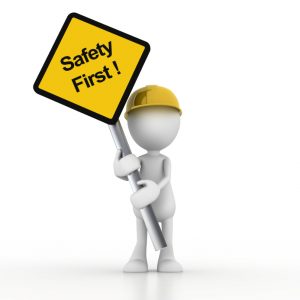 Employees who don’t learn the safe way to work are accidents waiting to happen — and that means that workplace safety training should play an integral role in your company’s risk management program. Repetition is essential to this process. Make sure that your trainers repeat essential work safety concepts, information, and terms several times. Look at it this way: At any moment during a training session, some trainees probably aren’t going to be paying full attention — and if they don’t hear something, they’re not going to do it when they get back on the job. What’s more, many people might need to hear, see, or experience things at least twice before they understand.
Employees who don’t learn the safe way to work are accidents waiting to happen — and that means that workplace safety training should play an integral role in your company’s risk management program. Repetition is essential to this process. Make sure that your trainers repeat essential work safety concepts, information, and terms several times. Look at it this way: At any moment during a training session, some trainees probably aren’t going to be paying full attention — and if they don’t hear something, they’re not going to do it when they get back on the job. What’s more, many people might need to hear, see, or experience things at least twice before they understand.
Repetition is also important when it comes to practical applications of safety information. Employees need the opportunity to practice what they’ve learned until it’s locked into their heads and their performance is flawless. So when a safety procedure involves a practical act, be sure that the trainers give a demonstration, repeat it a few times until everybody catches on, and provide feedback while trainees practice.
You’ll also need repetition to make sure that workers don’t forget what they’re supposed to have learned. Training industry leader Bob Pike says that people can remember 90% of what they’ve learned one hour after training, 50% after a day, 25% after two days, and only 10% 30 days later. According to Pike, full retention of subject matter requires no fewer than six repetitions! That means plenty of follow-up and refresher training — especially for more complex material. Other experts recommend spacing safety reinforcement training so that employees can practice new procedures and skills or use new information on the job supported by coaching before they go back to the classroom for review and additional training.





